Join getAbstract to access the summary!
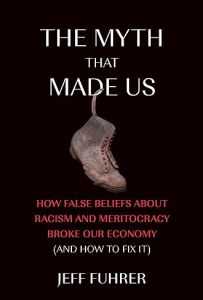
Join getAbstract to access the summary!
Jeff Fuhrer
The Myth That Made Us
How False Beliefs about Racism and Meritocracy Broke Our Economy (and How to Fix It)
MIT Press, 2023
What's inside?
The US economic ladder is broken – but it can be fixed.
Recommendation
Economist Jeff Fuhrer looks at American society and sees an economy constructed atop a fairy tale. According to what Fuhrer calls “The Myth,” the rich get rich through relentless toil and constant sacrifice, while the poor stay poor because they’re unwilling to do what it takes to better themselves. Fuhrer meticulously unpacks these assumptions, and he prescribes undoing US inequality through a variety of progressive policies, such as raising the minimum wage and investing heavily in education and child care. But Fuhrer’s policy suggestions seem unlikely to find traction in a nation in which so many still subscribe to The Myth.
Take-Aways
- The US economy is built on a distorted view of how and why some succeed while others struggle.
- Americans hold fast to their belief in drive and individual effort.
- Income inequality has intensified in the United States.
- “The Myth” has fostered the rise of low-wage, low-quality jobs.
- The Myth has prevented the United States from taking common-sense steps to improve economic security.
- Systemic racism has expropriated trillions of dollars from nonwhite Americans.
- America can make its economy more equitable.
Summary
The US economy is built on a distorted view of how and why some succeed while others struggle.
American society has fallen victim to “The Myth” – the deep-seated notion that modern capitalism rewards those who deserve it. Billionaires are successful because they’re simply smarter and harder working than everyone else, The Myth proclaims. And those left behind get what they deserve, too. They’re not savvy enough, not industrious enough and simply not motivated enough to thrive in a ruthlessly competitive marketplace. Those who accept The Myth dismiss many other realities, too, such as that race and class disadvantage millions of Americans, and that individual prosperity isn’t determined solely by individual effort. The Myth lets policymakers and business leaders look past systemic solutions and blame personal failings.
“The system The Myth has built leaves millions behind.”
The Myth is deeply ingrained in the American citizenry. The earliest seeds are planted with the tale of America’s founding. The narrative stresses the nation’s roots as a place of equality and meritocracy. Anyone can succeed, The Myth says, regardless of color or creed, as long as they’re willing to work hard. Mainstream economics reinforces the idea of fairness and equality as a built-in feature of the American way of life. Economics students learn that wages are determined by market forces, and that markets are nothing if not efficient. So if one worker toils in a minimum wage job while another becomes wealthy, they’re simply getting the outcomes they chose, The Myth insists.
“A theme that is woven throughout our nation’s history is a deep mistrust of the poor.”
American society remains a place that lionizes successful people for their hard work while demonizing the poor for their apparent sloth. Even as the United States has built safety nets for the poor, many Americans hold strong opinions about who is worthy and who isn’t. The “deserving” poor, those who are physically unable to work, get a pass to collect government benefits. But the “undeserving” poor – those who appear physically able to work – are met with scorn. This thought process fuels distrust of the poor and popular suspicions that people at the low end of the wage scale want to fleece the American government for unearned benefits.
Americans hold fast to their belief in drive and individual effort.
A 2009 Pew survey demonstrated The Myth’s resilience. Despite a devastating financial crisis in 2008, the survey found Americans hadn’t changed their thoughts about how people achieve financial success. Respondents held firm in their belief that individual effort determines economic destiny. Some 71% of Americans pinned economic success on education and individual drive, rather than demographic characteristics or the state of the overall economy. Asked to rank the traits that led to financial prosperity, Americans put “hard work” and “ambition” atop the list. “Luck” ranked near the bottom. The poll found Americans discounted the role of race and class in economic mobility.
“In spite of some shifts in attitudes, our population retains great faith in the availability of opportunity and the power of self-determination.”
American society has long fostered the idea that individual sacrifice and determined toil are the keys to success. Alexis de Tocqueville in the 1830s noted Americans’ faith in the mantra that “anyone could get ahead.” Upward mobility was indeed available to Americans of the time – with the notable exceptions of enslaved and indigenous peoples. For white men, America’s expanding territory and growing economy did create opportunity. Upward mobility required little more than a willingness to work. “In America, most of the rich men were formerly poor,” Tocqueville wrote.
Income inequality has intensified in the United States.
In 2019, the top 1% of wage earners collected an average of $1.1 million, or 22 times as much as the average of the bottom 90%. The top 0.1%, meanwhile, reported an average income of $4.7 million, or 95 times as much as the other 90% of Americans. At the opposite end of the income scale, in 2021 fully 11% of Americans lived in households that made less than the poverty level, defined as $27,750 for a family of four. It’s disturbing that tens of millions of Americans live below the poverty line – and even more startling that the poverty line doesn’t change by geographic region. The definition is the same, whether a family lives in high-cost areas like New York City or San Francisco or in low-cost areas in the South or Midwest.
“The very rich are collecting a hugely disproportionate share of the total income.”
Behind the statistics lies a high human cost. Those living financially precarious existences face constant stress. Pedro, a parking clerk who makes $16 an hour, compares paying end-of-the-month bills to feeling a rope around his neck. Rosada drained her savings after her husband lost his job during the pandemic. Janet, a Boston resident, built up an emergency fund only to see it disappear when the bill for a car repair came in at $2,500. Many Americans aren’t officially in poverty but still subsist on the edge of financial ruin. A Federal Reserve study in 2021 found that nearly one-third of American families would be unable to produce $400 for an unexpected bill. For Black families, the percentage was more than half.
“The Myth” has fostered the rise of low-wage, low-quality jobs.
For workers on the economic margins, The Myth has created a toxic environment. Those who struggle to make ends meet are simply getting a message from markets – if their pay is low, that’s because the market doesn’t value their contributions, The Myth says. But the reality is that millions of Americans endure undesirable jobs. Pay is low, benefits are sparse and their schedules are uncertain. For instance, retail sales paid an average of just $745 per week in 2021. For women in retail sales, the typical weekly pay was just $635. These jobs come with other downsides: Sick time is rare, pensions are almost nonexistent and workers in these jobs constantly juggle child care responsibilities.
“Recent data suggests that workers are beginning to reach their breaking point.”
The Myth holds that people who are struggling have chosen their fates. Because of personal weaknesses or bad decisions, it’s the poor’s own fault that they haven’t gotten out of poverty, The Myth says. Of course, that sweeping generalization is ridiculous. It’s simply not possible that every poor person is poor because of their own mistakes, while every rich person is wealthy because of hard work and good decision making. In truth, a growing body of evidence shows that American economic mobility has narrowed, and that birthplace increasingly is destiny. In one example, the data compiled in the Opportunity Atlas find that Black men from adjacent neighborhoods in Mobile, Alabama, experience vastly different economic outcomes. Black men from the Mobile neighborhood of Westfield earn six times as much as Black men from the next-door neighborhood of Fowl River. A child has no say in where he or she is born, but a span of just a few blocks can make a life-changing difference.
The Myth has prevented the United States from taking common-sense steps to improve economic security.
American politicians and business leaders have embraced an extreme form of free market capitalism that has exacerbated income inequality and financial insecurity. But capitalism can work for workers. Americans only need to look to other developed nations to see more effective alternatives. One prominent priority in the United States has been lowering the tax burden. From 1965 to 2020, Americans paid about one-quarter of economic output in taxes, among the lowest level in the developed world. More than two dozen other nations have higher tax burdens. In Germany, Spain and the Netherlands, the tax burden was more than 35% of GDP. In France and Denmark, it was north of 45%.
“If we keep saying The Myth is true, we abdicate responsibility for changing the worst outcomes in our country, blaming them on individuals rather than systems.”
The Myth has created a self-perpetuating system. By bowing at the altar of efficient markets and pointing to the miracles of hard work, the rich and powerful keep alive policies that benefit them. The United States could strengthen safety nets and bolster public programs, but The Myth has persuaded voters that government oversight is the enemy. Just as America has chosen wealth inequality, it has deliberately acted to perpetuate racial inequality. The Civil War ended human enslavement, but the Jim Crow era that extended through 1964 codified a system of discrimination and inequality. Black schools were underfunded, and Black Americans had their voting rights and civil rights trampled. Even after World War II, banks engaged in “redlining” – the practice of actively denying home loans to Black borrowers. While acolytes of The Myth insist that racism is a thing of the past, structural racism persists.
Systemic racism has expropriated trillions of dollars from non-white Americans.
When Europeans arrived in North America, they found a land populated by indigenous peoples. Today, Native reservations account for barely 2% of America’s land mass. The typical Native household’s wealth is just 9% of the typical white household’s.Meanwhile, the white household’s net worth exceeded the typical Black household’s by $838,000 as of 2019. Do the arithmetic, and the 17.4 million Black households in America are worth a cumulative $14.5 trillion less than they would be in a fair and equal society.
“No matter how one accounts for the loss – as a historical reckoning of accumulated losses from slavery and institutional racism or as a forward-looking reckoning of the cost of leaving the system as it is – the United States has suffered enormously from leaving so many behind.”
For centuries, the United States has deliberately chosen to forsake its less favored citizens. But it is possible to reshape the system into one that acknowledges past wrongs and provides pathways for future success. Dalida, a Black woman in Boston, offers a different narrative. She rejects the “hard work” ethos. “I don’t think anyone worked harder than slaves,” she says. “And all of us who are slave descendants are poor and still trying to make something for ourselves.” Not that Dalida eschews work: She earned high grades in school and works as the executive director of a nonprofit. But she does reject the notion that an individual rises or falls based solely on his or her own efforts.
America can make its economy more equitable.
To foster an equitable system, these are among the necessary changes:
- Invest in early childhood education – The United States misses an important opportunity to invest in young children. While America invests $13,000 a year per child from kindergarten through high school, it spends less than $1,500 per child for those 5 years of age and younger. Children reared in homes with food insecurity and other warning signs arrive in kindergarten less prepared to learn. Offering high-quality early childhood education costs more than $20,000 per student per year, so public support would be expensive: perhaps $200 billion a year to subsidize early learning for millions of children.
- Emphasize community colleges – There are 1,200 community colleges in America, and these schools play an important role in preparing students of color for the workforce. While some community college students transfer to four-year schools, the real opportunity here is to offer vocational certificates in medicine, technology, manufacturing and engineering. Employers complain about a chronic shortage of skilled workers. Community colleges should renew their efforts to identify local shortages of skilled labor and train students to fill those positions.
- Increase minimum wages – Many states and cities have boosted minimum wages to $15 or more, but the federal minimum wage is just $7.25 an hour. That serves as the minimum wage in 20 states. Mandating that employers pay more squeezes some small businesses, but a growing body of evidence suggests that higher wages create a net benefit for regional economies.
“In human terms, the full realization of our people’s potential would change not just the head but also the heart and soul of the country.”
- Improve access to health benefits – As of 2020, 54% of Americans were covered by employer-provided insurance, 33% had public health insurance, 11% purchased their own coverage and 9% were uninsured. The uninsured population is concentrated at the low end of the wage scale. Through a combination of fines and subsidies, small employers should be encouraged to offer health insurance to their workers.
- Expand access to child care – For many families at the low end of the wage scale, child care is an impossible burden. Even for households making twice the poverty level, child care costs can consume more than one-third of their income. The rule of thumb is that families should budget no more than 7% of income for child care. There’s a clear gap here, and the federal government should more fully subsidize child care for low-income parents.
- Enact paid family medical leave – Just eight states require employers to give paid leave to workers who need to care for a newborn child or attend to other health matters. This benefit should be expanded to the states that don’t require it.
About the Author
Jeff Fuhrer is a nonresident fellow at the Brookings Institution and a foundation fellow at the Eastern Bank Foundation. He was previously executive vice president and director of research at the Federal Reserve Bank of Boston.
This document is restricted to personal use only.












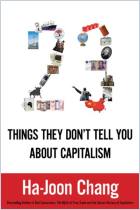


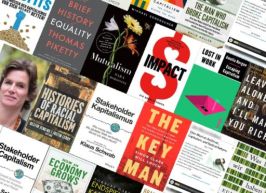
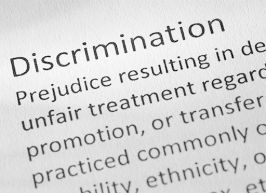


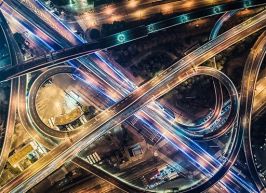


Comment on this summary